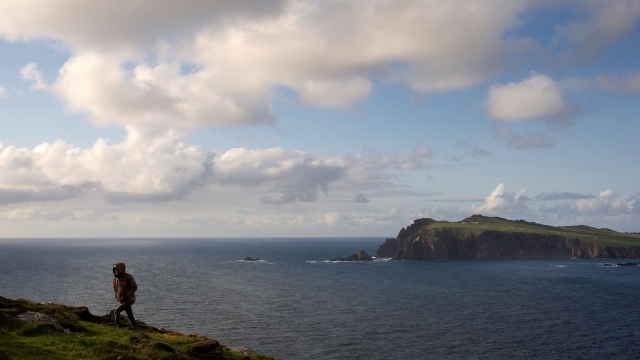
Hurricane Ophelia is headed for an unlikely place — Ireland
http://ift.tt/2hFrf1J
Hurricane Ophelia, the storm that formed over the Atlantic late last week, poses no threat to the U.S., but it may cause trouble for a small island that is far from the Caribbean.
Ophelia is on track to move near or even over Ireland and the western U.K. in the next three to four days and strong winds and rain are looking increasingly likely for both, the National Hurricane Center said in an advisory.
The storm is currently tracking about 545 miles southwest of the Azores with maximum sustained winds of 100 miles an hour. It is moving east northeast at 12 miles an hour and is expected to build speed through Saturday. Ophelia will weaken from hurricane strength as it passes over the Atlantic and hits cooler waters.
“Given the expected increase in the size of Ophelia’s wind field during extratropical transition, impacts from strong winds and rain are becoming increasingly likely over portions of the British Isles regardless of the exact track of the center,” said the NHC.
As the image below illustrates, the storm’s current path could take it over all of Ireland.
This second image provides a clearer image of the current path.
The Irish weather service, Met Eireann, is taking a cautious approach to the storm, noting that it’s too early to forecast its exact path or expected strength.
“While there could be the threat of wind gusts reaching hurricane force or indeed heavy rainfall with this system, it means the traditional attributes of a hurricane—such as an eye or an eyewall containing a core of hurricane force winds — are very unlikely to be present,” Met Eireann said in its latest update.
Instead, it will likely engage and merge with a frontal zone in the Atlantic, morphing into a mid-latitude depression with tropical characteristics.”
Irish forecasters will be keeping a close eye on the storm over the next few days.
Ireland has only one hurricane on record, an event referred to with some understatement as The Night of the Big Wind, a major storm that hit the country on January 6, 1839. According to contemporary reports, winds reached speeds of more than 115 miles an hour, making it a Category 3 hurricane on the Saphir-Simpson scale.
Oral accounts of the event describe the torrential rain that caused the river Shannon, Ireland’s biggest, to burst its banks, flooding vast parts of the country, as the Irish Times has reported.
The storm began after a cold spell and heavy snowstorm in early January that was followed by a day so sunny and hot that it melted the snow. About 300 people were killed in the storm and many more were left homeless as badly-made homes lost their roofs or were washed away.
September was officially the most active month for Atlantic hurricanes on record, according to the National Hurricane Center.
Four tropical cyclones became hurricanes and three of those Harvey, Irma and Maria, became major hurricanes, defined as Category 3 or higher.
The storms caused damage to Texas, Louisiana and Florida, and devastated many Caribbean islands, and fully destroyed the electrical power system in Puerto Rico.
The PowerShares KBW Property & Casualty Insurance Portfolio ETF
has gained 6.4% in 2017, while the S&P 500
has gained 14% and the Dow Jones Industrial Average
has added about 16%.
business
via MarketWatch.com – Top Stories http://ift.tt/dPxWU8
